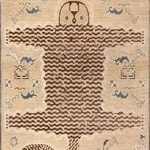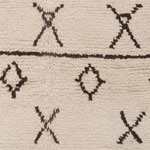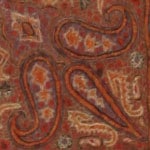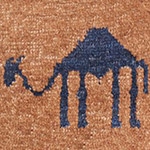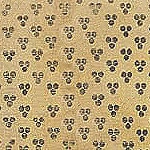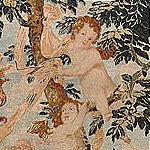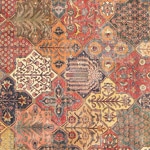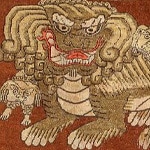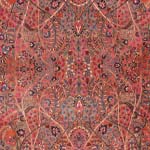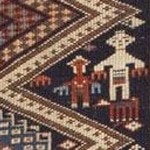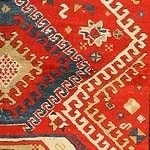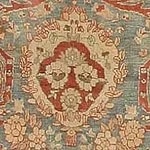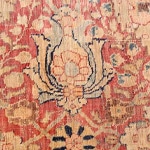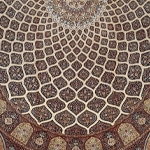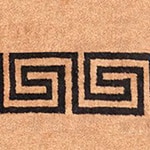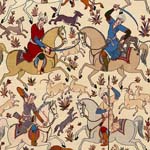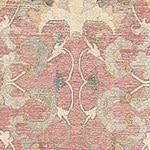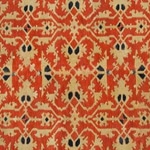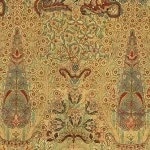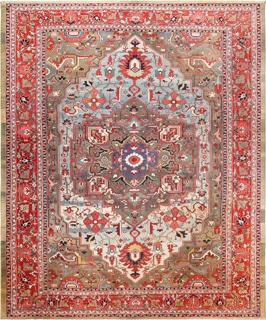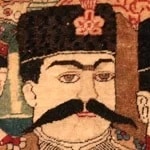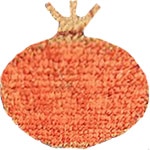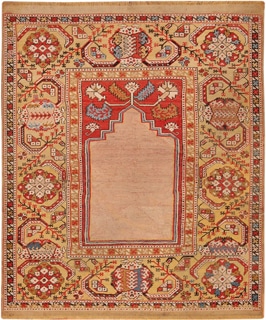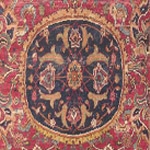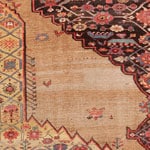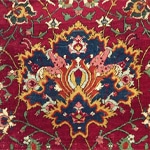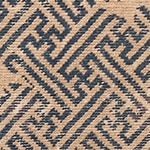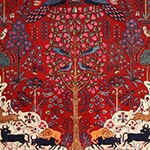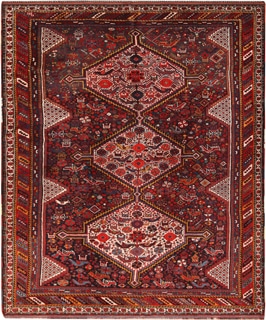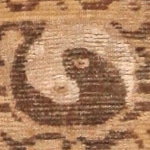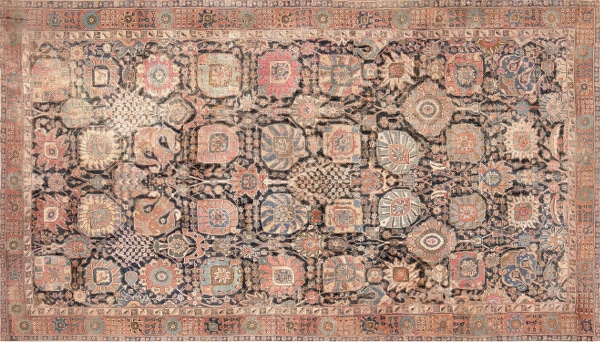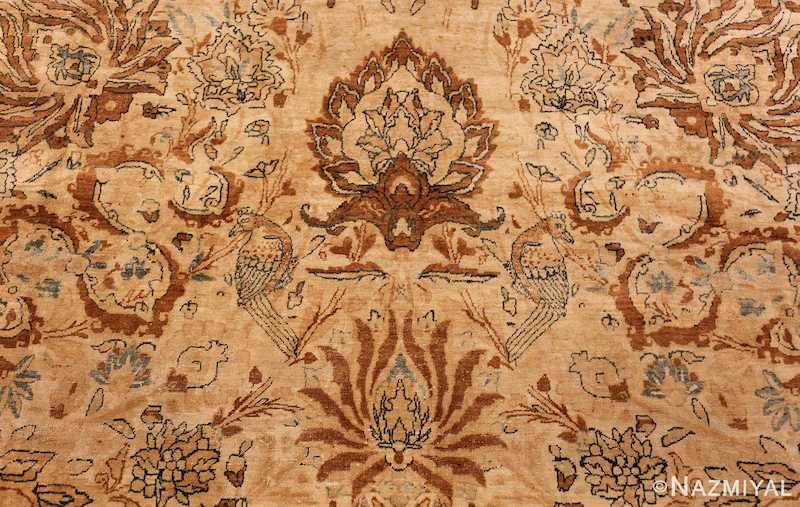Learning About The Magnificent Carpet Patterns and Rug Designs
Rug Designs and Carpet Patterns?
Rug designs and carpet patterns encompass a wide range of artistic and decorative elements used in the creation of rugs and carpets. These elements contribute to the overall aesthetics and style of the floor covering.
Here are some common rug designs and carpet patterns:
- Geometric Patterns: Geometric designs involve the use of shapes such as squares, rectangles, triangles, and circles. These patterns can be simple or complex, and they often create a sense of order and symmetry.
- Floral Patterns: Floral designs incorporate flowers, vines, and other botanical elements. These patterns can range from realistic depictions to stylized and abstract representations of flowers and plants.
- Traditional / Oriental Patterns: Traditional rug designs often draw inspiration from various cultural and historical motifs, such as Persian, Turkish, or Indian patterns. These designs often include intricate details and elaborate borders.
- Stripes: Striped patterns involve straight lines of varying widths and colors. Stripes can be arranged horizontally, vertically, or diagonally and are commonly used to create a sense of movement or to elongate a space.
- Abstract Patterns: Abstract designs are non-representational and may involve shapes, lines, and colors arranged in a way that does not necessarily depict recognizable objects. These patterns can be modern and avant-garde.
- Chevron and Herringbone: Chevron and herringbone patterns involve zigzagging or V-shaped designs. These patterns can add a dynamic and visually interesting element to a rug or carpet.
- Animal Prints: Animal prints mimic the patterns found on the skins or fur of animals, such as leopard spots or zebra stripes. These designs are often used for a bold and exotic look.
- Solid Colors: Some rugs and carpets feature a solid color without any intricate patterns. This minimalist approach can be used to create a clean and contemporary look.
- Textured Patterns: Textured designs incorporate various pile heights and materials to create patterns and textures. This can add depth and interest to the surface of the rug.
- Modern / Contemporary Designs: Modern and contemporary rug designs often feature bold colors, asymmetry, and innovative patterns. These designs reflect current design trends and can range from simple and understated to complex and artistic.
When choosing a rug or carpet, individuals often consider the overall style of the room, color scheme, and personal preferences in terms of design. The choice of rug or carpet pattern can significantly impact the visual appeal of a space.
View our collection sorted by their rug patterns and carpet designs:
How to choose a rug design and pattern?
Choosing a rug design and pattern involves considering various factors to ensure that the rug complements your space and meets your aesthetic preferences.
Here are some tips to help you choose the right rug design and pattern:
- Consider Room Style:
- Assess the overall style of the room. Is it modern, traditional, eclectic, or minimalist? Choose a rug design that aligns with the existing decor and enhances the overall theme of the room.
- Think About Color Scheme:
- Consider the color palette of your room. Choose a rug with colors that either match or complement the existing colors in the space. A well-chosen color scheme can tie the room together.
- Size and Shape:
- Determine the size and shape of the rug you need. Consider the dimensions of your room and the placement of furniture. A rug that is too small or too large for the space can disrupt the visual balance.
- Personal Style:
- Reflect on your personal style and preferences. Do you prefer bold and vibrant patterns, or do you lean towards more subtle and neutral designs? Your rug should resonate with your taste and contribute to the overall atmosphere you want to create.
- Consider Traffic and Functionality:
- Evaluate the level of foot traffic in the area where the rug will be placed. For high-traffic areas, consider durable materials and patterns that can hide stains or wear and tear. In less trafficked areas, you have more flexibility in choosing delicate patterns.
- Mixing Patterns:
- If your room already has patterns in the furniture or wall coverings, choose a rug that complements these patterns without overwhelming the space. Consider mixing patterns and textures thoughtfully for a balanced look.
- Balance with Solid Colors:
- If your room has bold or busy patterns in other elements, you might opt for a rug with a solid color or a more subtle pattern to balance the visual appeal. On the other hand, a neutral room can benefit from a rug with a more intricate design.
- Consider Room Size:
- In smaller rooms, a lighter-colored rug or a rug with a simple pattern can create a sense of openness. In larger rooms, you have more flexibility to use larger or more detailed patterns.
- Seasonal Considerations:
- Think about the seasonal changes in your region. In colder seasons, you might prefer a rug with a thicker pile for warmth, while in warmer seasons, a lighter and cooler rug may be more suitable.
- Test Before Buying:
- Whenever possible, bring home samples or swatches to see how the rug interacts with the lighting and other elements in your room. This can help you visualize the final look before making a purchase.
Ultimately, choosing a rug design and pattern is a personal decision. Take your time, consider your preferences, and select a rug that not only complements your space but also adds to the overall comfort and style of the room.
What are patterned rugs called?
Patterned rugs come in various styles and designs, and they can be referred to by different names depending on the specific pattern or design they feature.
Here are some common types of patterned rugs along with their names:
- Geometric Rugs:
- Feature geometric shapes such as squares, rectangles, triangles, or circles arranged in patterns.
- Floral Rugs:
- Showcase floral patterns with depictions of flowers, vines, and other botanical elements.
- Oriental or Persian Rugs:
- Characterized by intricate and traditional patterns often inspired by Persian or Oriental designs.
- Contemporary Rugs:
- Have modern and current designs, which can range from abstract patterns to bold and innovative styles.
- Traditional Rugs:
- Include classic and timeless patterns that often draw from historical and cultural motifs.
- Southwestern Rugs:
- Incorporate patterns inspired by the Native American and Southwestern design traditions, often featuring geometric motifs and earthy tones.
- Chevron Rugs:
- Feature a zigzag or V-shaped pattern, adding a dynamic and modern touch to the space.
- Moroccan Rugs:
- Showcase traditional patterns inspired by Moroccan design, often with a focus on geometric shapes and bold colors.
- Striped Rugs:
- Display straight lines of varying widths and colors, arranged horizontally, vertically, or diagonally.
- Abstract Rugs:
- Have non-representational designs, often featuring unique combinations of shapes, lines, and colors.
- Animal Print Rugs:
- Mimic the patterns found on the skins or fur of animals, such as leopard spots, zebra stripes, or cowhide patterns.
- Tribal Rugs:
- Incorporate patterns inspired by various tribal cultures, often featuring bold and geometric designs.
- Shag Rugs:
- Have a deep, plush pile and may come in various patterns, including solid colors, stripes, or more intricate designs.
- Kilim Rugs:
- Feature flat-woven, traditional patterns often associated with Middle Eastern or Central Asian cultures.
- Damask Rugs:
- Showcase a specific type of pattern that originated in woven silk fabrics but is also used in rug designs, characterized by elaborate floral motifs.
These terms are used to describe the specific visual characteristics of patterned rugs, and you can use them to narrow down your search when looking for a rug that suits your style and preferences.
What rug design makes a room look bigger?
Choosing the right rug design can visually impact the perception of space in a room.
To make a room look bigger, consider the following rug design tips:
- Use Light Colors:
- Light-colored rugs, especially in neutral tones like beige, light gray, or ivory, tend to create a sense of openness and airiness. Light colors reflect more light, making the room feel larger.
- Choose Simple Patterns:
- Opt for rugs with simple and subtle patterns. Avoid overly intricate or busy designs that can make the space feel cluttered. Geometric patterns or small-scale motifs can work well.
- Consider Stripes:
- Striped patterns, especially those running lengthwise, can visually elongate a room. Vertical stripes create the illusion of height, while horizontal stripes can make a room feel wider.
- Select a Larger Rug:
- Choosing a rug that covers a significant portion of the floor can make the room appear more spacious. A larger rug visually expands the boundaries of the room.
- Match Rug Color to Flooring:
- If your flooring is a similar color to the rug, it creates a seamless transition between the two, making it harder to distinguish where the floor ends and the rug begins. This continuity contributes to a more expansive feel.
- Avoid Dark Borders:
- Dark-colored borders on rugs can create a defined edge that makes the room seem smaller. Opt for rugs without or with minimal dark borders.
- Use Rugs with Low Pile:
- Rugs with a low pile height (shorter fibers) can create a sleek and unobtrusive look, giving the impression of more floor space.
- Reflective Materials:
- Consider rugs made of materials with a slight sheen, such as silk or certain synthetic fibers. These materials can reflect light and contribute to a brighter, more open feel.
- Position Furniture Strategically:
- Ensure that the furniture legs sit on the rug, creating a cohesive look. This helps integrate the rug into the overall design and can contribute to a sense of expansiveness.
- Use Mirrors:
- While not directly related to rug design, strategically placing mirrors in the room can enhance the perception of space by reflecting light and creating the illusion of depth.
Remember that these tips are general guidelines, and personal preferences play a significant role in design choices. Experimenting with different rug designs and arrangements can help you find the best fit for your specific room and style.
What rug design makes a room look smaller?
If you want to make a room look smaller or create a more intimate and cozy atmosphere, you can choose rug designs and patterns that add visual weight and warmth.
Here are some rug design tips to achieve this effect:
- Dark Colors:
- Dark-colored rugs, such as deep blues, rich browns, or charcoal grays, absorb light and create a sense of coziness. Dark colors visually bring the floor closer, making the room feel smaller.
- Bold Patterns:
- Opt for rugs with bold and large-scale patterns. Intricate and busy designs can make the space feel more enclosed and visually diminish the perceived size of the room.
- Choose a Smaller Rug:
- Selecting a rug that doesn’t cover the entire floor and leaves some space around the edges can create a more intimate feel. A smaller rug can define a specific area within a larger room.
- Use Layered Rugs:
- Layering rugs can add texture and create a sense of depth. Consider placing a smaller, patterned rug on top of a larger, solid-colored rug for a cozy and layered effect.
- Opt for Plush Pile:
- Rugs with a high pile height, such as shag rugs, provide a plush and soft texture that adds to the cozy ambiance. This tactile quality can make the room feel smaller and more inviting.
- Warm Tones:
- Choose warm-toned rugs in hues like reds, oranges, or yellows. Warm colors evoke a sense of comfort and intimacy, making the room appear cozier and smaller.
- Patterned Borders:
- Rugs with prominent and contrasting borders can visually frame the space and create a sense of enclosure, making the room feel more contained.
- Use Rich Textures:
- Textured rugs, such as those with cable-knit or woven patterns, can add visual interest and make the room feel snug and inviting.
- Create Focal Points:
- Choose a rug with a distinctive design that serves as a focal point in the room. This draws attention to the rug and the immediate surroundings, making the space feel more concentrated.
- Place Furniture Completely on the Rug:
- Unlike the tip for making a room look larger, consider placing all furniture entirely on the rug. This creates a cohesive and integrated look, emphasizing the central gathering area and making the room feel smaller.
Keep in mind that the goal is to create a comfortable and inviting space that suits your preferences. Experimenting with different rug designs and combinations can help you achieve the desired atmosphere in your room.
The quality of the rug design
In many ways design is the ultimate quality in which the appeal of a rug may reside. In interesting or unusual design, one that makes effective use of line and color, or perhaps one that that is unusually detailed and intricate may have the appeal that attracts the interest and passion of the viewer.
But these are all subjective qualities that will appeal to some viewers and not to others. Fortunately, over the large gulf of time during which they have been made, rugs have been produced in every type of design imaginable.
It really is not a stretch to say that the right rug for everyone is just waiting to be found — if one is willing to look for it. But it may be of interest to see the ways in which rug designs have been developed and passed on.
Some cultures across the globe have been manufacturing fine carpets for centuries, and, as such, area rugs are of the paramount importance to such groups of people. When one considers the astonishing and rich history of Oriental rugs, for example, one cannot help but marvel at the impressive range of rug designs that have emerged from that region over the centuries.
This impressive range in the designs of rugs can largely be attributed to the deeply ingrained nature of the art of rug making to the Persian people — all across that complex, myriad land, people took to making carpets just as their parents had before them, incorporating their preferred elements of design into carpets of their own.
As a result, a great many different designs and styles emerged — all the better for today’s ken homeowners who might be seeking out the perfect rug for their home!
View our carpets by their patterns and rug designs:
Click Here to Go Back to List of Rug Symbols
Antique Rug Patterns and Rug Designs – Antique rug patterns and for that matter, Antique rugs in general, (just like people) come in all shapes, sizes, and designs. Beautiful rugs are woven all over the world, and have been hand-made by artisans for centuries.
Because of this practical geographic universality and this tremendous breadth of time, there are practically countless different styles, designs, and rug patterns that may be found in fine carpets. Rugs may range in size from scatter-size to palace size; they may range in decoration from elaborate fields of stylized flowers to monochromatic fields surrounded by subtly contrasting borders; they may range in origin from American to Turkish to Tibetan.
Because of this enormous variegation, finding the fine antique rug or carpet that is right for you may seem overwhelming. That is where we come in. In the hopes of making things easy for our clients, we have organized our inventory based on specific looks, rug patterns and carpet styles. This way, if you have a broad idea of what it is that you would like your new carpet to look like, it should be easy for you to sort through the patterns below and identify that which is best suited to your tastes.
While some of us might have our hearts set on a rug with animals, others might be more inclined toward a geometric rug design, while others still might be drawn to floral motifs. Whatever your taste might be, we have engineered out site to be as user-friendly as possible for our customers. Simply click on the images below to see our selection of antique rugs by their patterns.
On the Hunt for Beautiful Antique Rug Patterns
There are rugs, and then there are beautiful rugs that go beyond the artistic norm. These outstanding carpets are featured in museums, private collections and world-class estates. Only one vendor specializes in procuring the most beautiful rugs from all over the world, and that company is Nazmiyal Collection. The extreme quality of the fiber and dyes, stylistic finesse and superlative construction set these beautiful rugs apart from the rest and make them true masterpieces.
Many beautiful antique rugs feature regal hunting scenes, iconic religious stories and elaborate narratives based on classical works of Persian literature. Then, there are the superfluous arabesques, splendid medallions and outstanding rugs produced by master craftspeople in Persia’s most prestigious weaving cities. In the 20th century, many beautiful rugs were produced in Europe as well. These stunning art carpets feature the designs of Picasso, Miro, Dali, Kandinsky, Agam, Warhol and the world’s most beloved modern designers and artists. There are also rustic kilims and quaint village rugs that are extremely beautiful, but beauty ultimately lies in the eye of the beholder.
What Do Collectors Usually Look for in Antique Rug Designs?
When it comes to artisanal rugs and carpets, there are few things more important than the rug design. After all, the design of a rug or a carpet is what makes it distinct, what makes it unique.
Just as individual taste varies incredibly from person to person, so to does the design of a carpet cary from piece to piece. Because rug weaving is an ancient craft that has been practiced all over the world, the variety of rug designs is as vast as you can imagine.
Design is a central issue – if not the central issue – in rug collecting. It is a key factor in recognizing the type of a rug and placing it within a a historical sequence or development. Rating design quality in critical terms is also considered the mark of a real collector, one who has acquired an “eye.”
An understanding of design is important in assessing if a rug is rare or important, or more culturally authentic. It is also critical in determining if a rug is late, simplified, confused, or degenerate, all things that collectors seek to avoid.
Learning About Antique Rug Patterns and Designs
What Antique Rug Designs or Pattern are Right for the Room?
Determining the style or design for an antique rug or vintage carpet depends on various factors, but knowing the space and applying your own personal preferences will help you determine a suitable rug for your home. Here are some major factors to consider when making your decision:
Traditional Rugs vs. Modern Designs – More traditional designs incorporate well into older homes with more intricate décor while modern design rugs lend themselves to contemporary spaces with simple geometry and an open aesthetic.
Geometric Style Rugs vs. Curve-linear Patterns – Geometric rugs with bold patterns and strong contrasts have a masculine appeal while floral designs with softer color schemes and less contrast emanate a feminine charm.
Allover Design Rugs vs. Medallion Carpets – People often tend towards symmetry in a room (though certainly that is only a preference). Allover designs make furniture arrangement easy for spaces such as living rooms and libraries. Certain rooms, such as dining rooms, provide the perfect setting for a medallion rug.
Colorful Rugs – Colorful rugs will make a strong statement in a room, while a more neutral or monochromatic rug will subtly compliment the other colors in the room and integrate easily into existing decor.
It is necessary to remember that these are just guidelines, but personal preference is the single most important factor when choosing a rug for your space.
Main Designs and Pattern Principles of Oriental Persian Rugs
Persian rug designs include a remarkably varied range of patterns and taste depending on the nature and locale of production. These tend to fall into two main categories – urban or city rugs whose designs are rooted in the classical traditions of the Safavid period, and village or tribal, nomadic rugs characterized by a more abstract, geometric sensibility.
This division is not, however, absolute since village or tribal designs often turn out to be highly transformed adaptations of classical models. But for the most part, city rugs display a more sophisticated design repertory characterized by recognizable floral rug forms articulated with elegant undulating curves or rhythms, while village and tribal rugs tend to rely on more abstract forms using bold, more rectilinear graphic effects and repetitions.
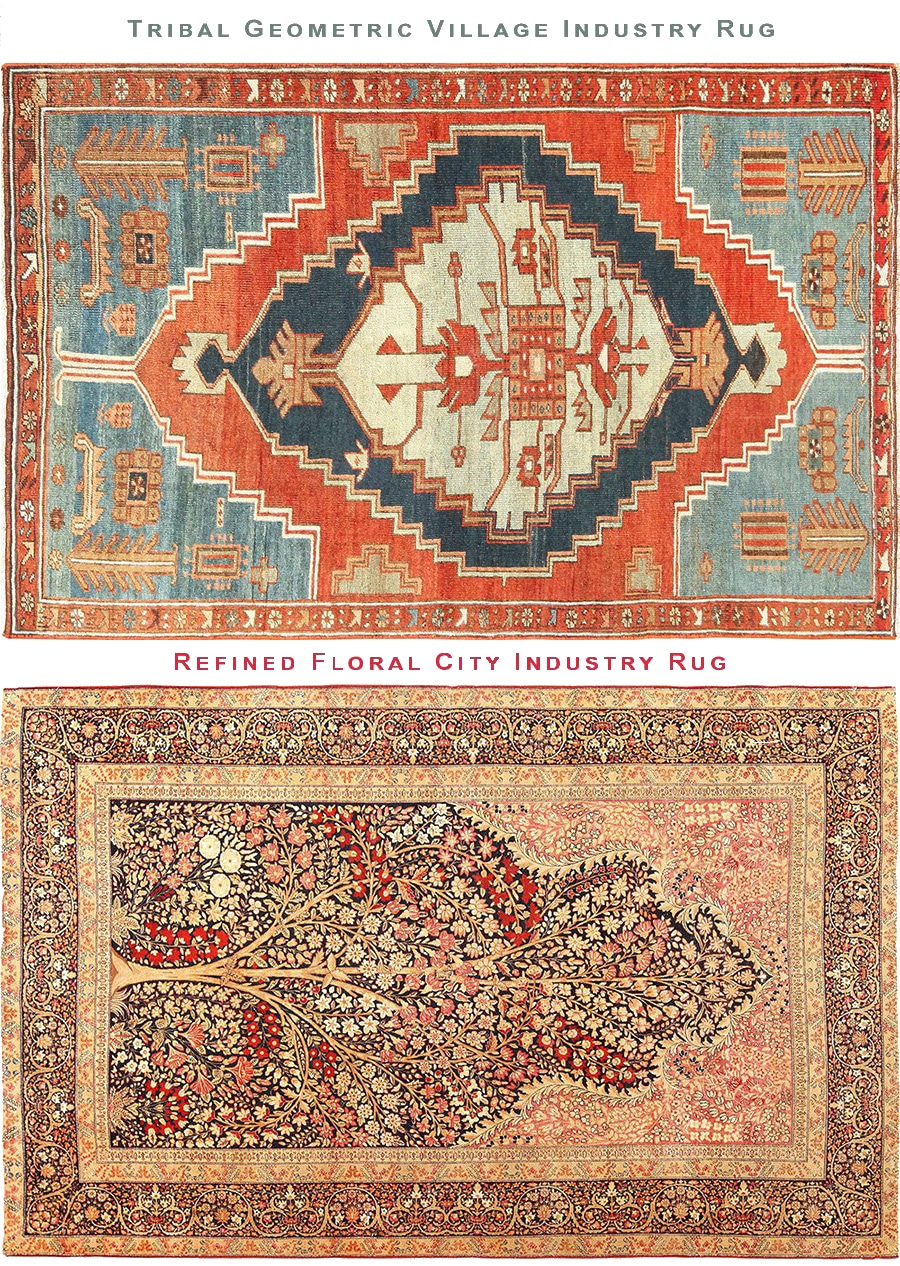
Geometric Tribal Pattern Village Rug and a Refined Floral Design City Made Persian Rug
Whether urban or village productions, Persian rugs and carpets tend to use two main design principles – centralized or medallion compositions and allover rug repeat patterns. Centralized designs are organized around a central medallion of variable form, often elaborated as a series of medallions within medallions, framed by four quarter medallions or ‘corner-pieces.’ The intervening area or field is usually filled with separate floral or geometric rug design motifs or ‘space-fillers.’

Tribal Geometric Human Figure Patterns vs Refined Human Figure Design
In contrast, allover repeat designs consist of smaller medallions or other motifs repeated across the entire field vertically and horizontally in rows, either as a grid or staggered. The design may be made more complex through the addition of additional smaller motifs between the larger repeating ones. Both the medallion and allover formats may also be articulated as compartment patterns derived from classical Islamic geometric rug ornament.

All Over Design Rug Vs Central Medallion Pattern Rug
Urban or city rugs with floral, curve-linear designs of arabesque or vine-scroll type may be designed either in a centralized medallion format or as a more integrated allover repeat pattern. Additionally, they may use a compartment structure filled with floral detail. In the same way village or tribal rugs may also utilize either format, although village production often favors allover designs. And when using the medallion format village rugs tend to use two or three superimposed central medallions, and they may eliminate the corner-pieces.
Apart from Gabbehs and kilims, all Persian rugs, whatever their design, tend to enclose the field pattern with one or more framing borders. The border system may have one ‘main’ border with smaller ‘minor’ borders and/or ‘guard stripes’ to either side, or it may have a more complex arrangement of multiple concentric borders. The motifs within the borders may be separate elements arranged in serial repetition, or they may be connected as a larger, continuous pattern like a vine-scroll. And as in the field the main design elements may be surrounded by additional space-fillers to complicate the Persian rug design pattern.
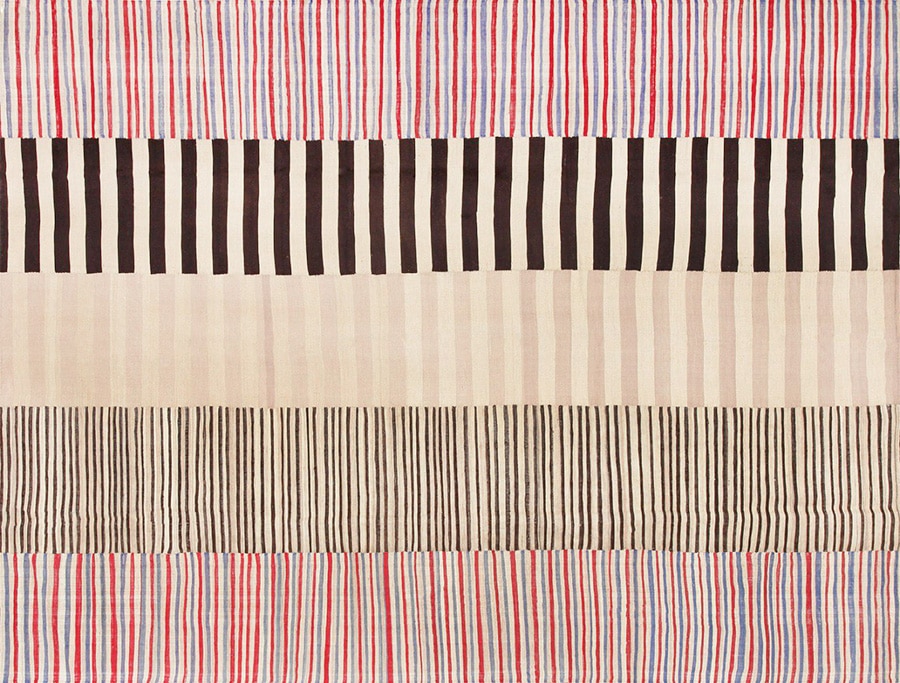
Tribal Design Antique Persian Kilim Rug (sold)
There are of course exceptions to these general design categories. The most significant of these is the so-called prayer format. It is distinguished by an arch-like opening or ‘mihrab.’ This is often interpreted as a door or window looking onto paradise, but most immediately it is modeled on the mihrab or ‘qibla’ niche used in mosques to indicate the direction of Mecca for prayer.

Mihrab Design In Islamic Muslim Antique Prayer Rugs
On city rugs, the mihrab Persian rug design is a fairly pictorial depiction of a niche framed by recognizable columns supporting an arch, often with a hanging lamp suspended from the apex, although the areas within and outside the arch may be patterned with various filler motifs. Village prayer rugs usually render the architecture more abstractly, so that at times little more than the outline of the arch or doorway remains amidst the patterning.
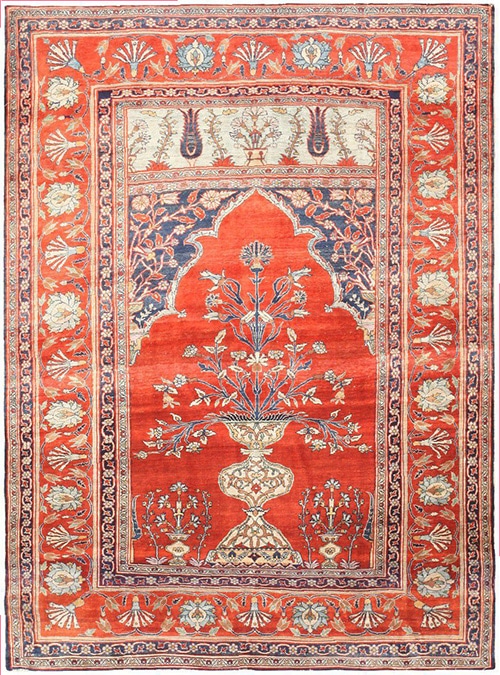
Antique Persian Prayer Rug Design
The prayer Persian rug designs of the field is usually enclosed by a framing border system of some kind. Another significant exception is the so-called tree of life design, again possibly an imagery of eternal peace in paradise. Here in place of a medallion or allover pattern, the field is organized around a tree rendered either in a relatively life-like pictorial fashion, or in variable degrees of abstraction. When more realistically rendered, the tree usually supports birds or other feeding animals emphasizing its life-giving power.
Like the prayer niche format, the tree of life rug design is usually enclosed by one or more borders. At times, prayer design rugs may depict the tree of life within the mihrab to suggest the heavenly domain.

Floral Pattern Antique Persian Tree Of Life Design Rug (sold)
Already by the Safavid period, pictorial rug elements of human figures, animals, and floral or vegetative form had also become a significant though subordinate element within Persian rug designs or carpet patterns. But during the Qajar period or 19th century, Persian art became increasingly open to a more western, less traditionally Islamic traditions of pictorial art. In place of earlier Persian miniature and wall painting, Qajar art now encouraged the production of framed easel paintings of European type.
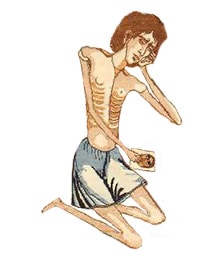
A Persian Design Pattern Of A Refined Human Figure
This new taste inevitably began to affect rug production as well, which literally copied Qajar paintings or at times the pictorial reliefs found on ancient Persian ruins like those at Persepolis. As such, antique rugs of this kind stand apart from the main tradition of Persian rug weaving, although they often achieve a distinctive and still thoroughly Persian rug designs, styles and effects.
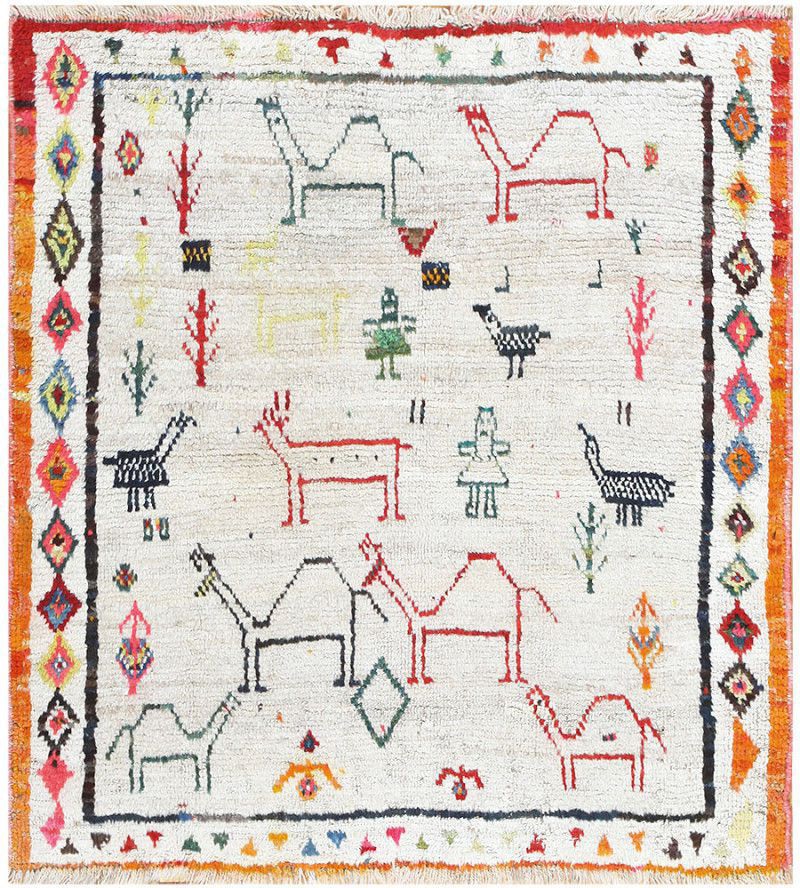
Tribal Village Persian Gabbeh rug with Geometric People and Animal Design Patterns
One last exception to the Persian rug designs is the so-called Persian Gabbeh rug. These are quintessentially village or tribal rugs whose design consists of small-scale human and animal design forms, and at times tents or buildings, all distributed across a relatively open field or ‘landscape,’ generally with no border of any kind.
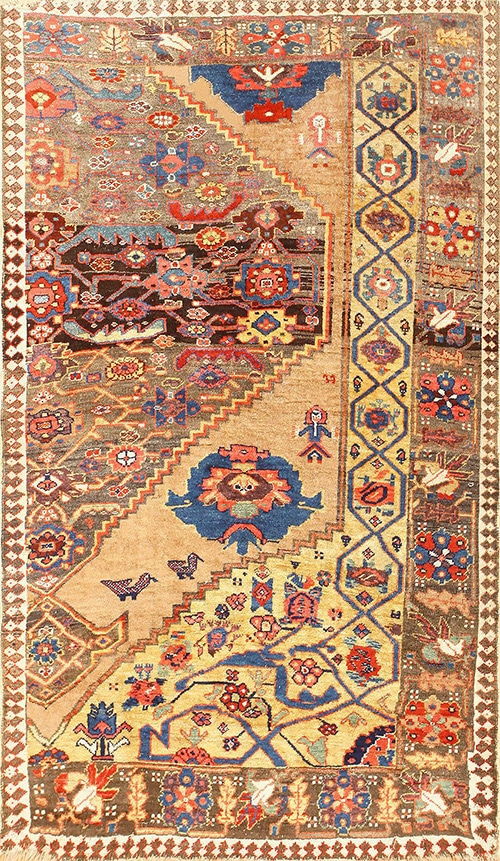
Persian Tribal Rug with Small Scale Human Figures and Animal Design Patterns (sold)
They represent an almost self-consciously primitive sensibility relying on effects of color and wool quality that appeals especially to modern western taste, like the purely abstract Persian kilims of Mazandaran.
History of the Famed Palmette Rug Motif
The palmette motif, or arabesque flower, is one of the most common and beautiful motifs that you can find in Persian rugs. It is a highly stylized design and does not resemble any known flower species, for the most part. It has a colorful history, and it is one of the most common symbols in Persian rugs and many other forms of artwork. Let’s explore the history and development of this familiar design.
Early Forms of the Palmette Motif
The palmette is associated with Persian rug design. It is found most frequently in Persian art of the 15th and 16th centuries, but early versions of it can be found in Egyptian art and Assyrian art. In earlier forms, the petals and center of the flower are flanked by arabesque designs. The meaning of this symbol is “sacred tree.” Throughout the ages, this basic shape remained, but it took on many different stylized forms.
Many scholars agree that the palmette first began to appear in ancient Egypt. It is found on the walls of tombs, temples, and clothing. It is believed that it originated from the lotus design, which represented the union of lower and upper Egypt into a single kingdom.
The palmette also resembled the crown of the Sun God, Ra, who represented the divine and the afterlife in Egyptian culture. In ancient Egypt, the palmette can appear as a flower or as a tree with a long trunk. It was often found along the floor of temple walls, where it seems to represent the emergence of life from the Nile River.
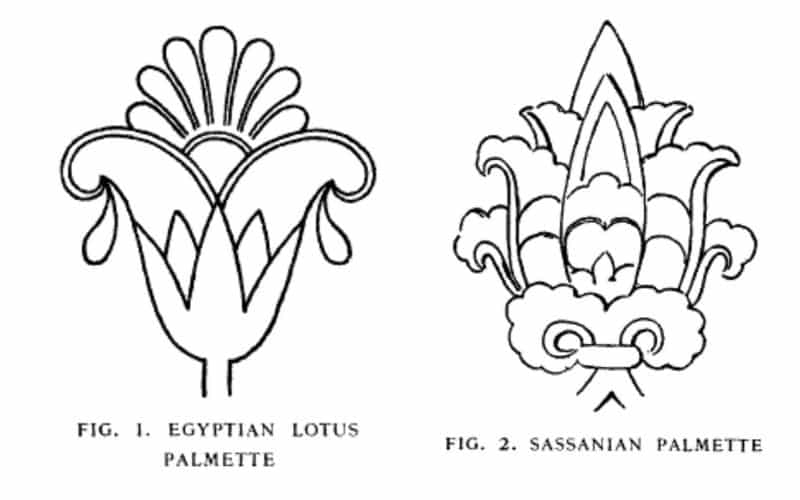
Two examples of different styles of the palmette motif.
Palmette Motifs in Greek Artwork
The next place that you begin to see the palmette is in ancient Greece. A large amount of economic and cultural exchange took place between the Greek and Egyptian societies. It is not uncommon to see elements of Egyptian art in Greek decorative arts, too. The Greek palmette is called the anthemion, and it sometimes included recognizable plant and flower portions that give it additional meaning.
The symbol later began to appear in Asia, where it became known as an “Oriental” design. It is also seen throughout Roman art and architecture, too. In ancient Rome, the palmette is often displayed with the lions of Aker above it, guarding the palmette in symbolism that represents the Tree of Life. A version of the palmette is also found in ancient Norse traditions as the sacred World tree. The Saxons also had a version of the symbol called the Irminsul, or sacred pillar.
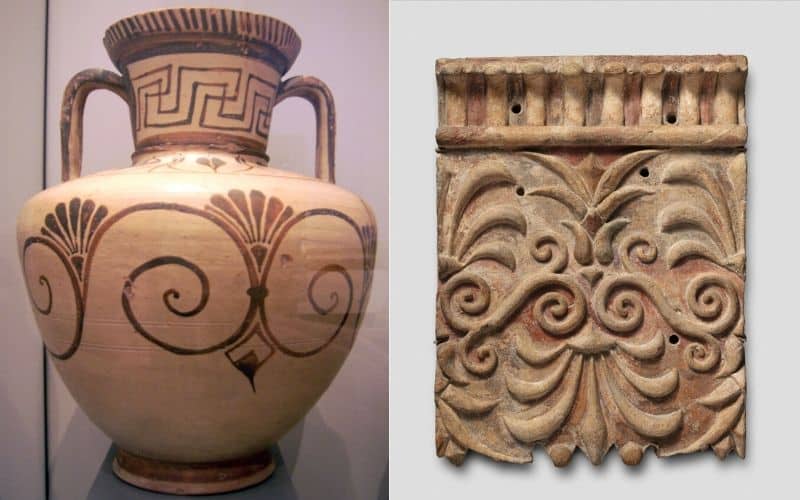
Examples of the palmette motif in ancient Greek artwork.
The Golden Age of Persian Rugs
Although the motif is found throughout many cultures long before the Safavid Dynasty came into existence, it is most widely associated with the royal courts of Shah Abbas I. During the early days of the Safavid Dynasty, and the courts went to great lengths to patronize the arts, including rug weaving. The arts were used to show the wealth and power of the Persian courts.
The palmette is named after Shah Abbas I, who is responsible for establishing the court workshops. Palmettes were found in abundance on court rugs and became a symbol of the Safavid rulers. It became like their brand or trademark. Pieces produced in state-sponsored workshops were easily distinguished from the tribal rugs that were woven in the surrounding area.

The palmette motif in a Khorassan rug.
The palmette is found most prominently in the rugs of Tabriz, Kerman, Isfahan, and Qum. These cities were home to the weaving shops that were tasked with weaving the spectacular court carpets of the Safavid Dynasty. Its use in these weaving centers seems to indicate that it was a motif that was sanctioned by the courts. Many times, the weavers took liberties with the design and created the palmette using a lotus flower, which is also a symbol for eternal life.
The palmette is a common design found on Persian rugs, but it is also found throughout many cultures and has ancient origins. It’s connection to the Tree of Life and the divine is a theme that is found throughout many cultures where this symbol is found. This begs the question as to whether by using this ancient symbol to represent the Safavid Dynasty Shah Abbas I was implying a connection between the Dynasty and the divine. We might never know the real answer to this, but one thing that we know for sure is that this ancient symbol is one of the most graceful in the Persian rug weaving repertoire.



